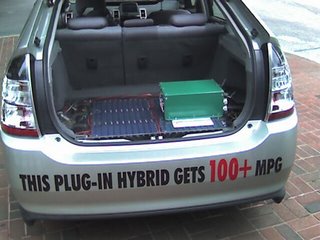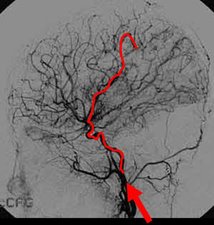Towards 2020 Science
A good while ago, Microsoft assembled several dozens of respected scientists into the Towards 2020 Science Research Team to come up with a realistic vision of our scientific future.
Their findings have been put in a report (Adobe Acrobat Reader required).
From the report:
This report contains the initial findings and conclusions of a group of internationally distinguished scientists who met over an intense three days in July 2005 to debate and consider the role and future of science over the next 14 years towards 2020, and in particular the importance and impact of computing and computer science on science towards 2020.
...
A scientific revolution is just beginning. It has the potential to create an era of science-based innovation that could completely eclipse the last half century of technology-based innovation; and with it, a new wave of global social, technological and economic growth.
...
From our analysis and findings, we draw three conclusions about science towards 2020:
First, a new revolution is just beginning in science. The building blocks of this revolution are concepts, tools and theorems in computer science which are being transformed into revolutionary new conceptual and technological tools with wide-ranging applications in the sciences, especially sciences investigating complex systems, most notably the natural sciences and in particular the biological sciences. Some of us argue that this represents nothing less than the emergence of ‘new kinds’ of science.
Second, that this is a starting point for fundamental advances in biology, biotechnology, medicine, and understanding the life-support systems of the Earth upon which the planet’s biota, including our own species, depends. In other words, that the scientific innovation already taking place at the intersection of computer science and other sciences ranging from molecular biology, organic, physical and artificial chemistry and neuroscience to earth sciences, ecosystems science and astrobiology has profound implications for society and for life on Earth. Additionally, such advances may also have significant economic implications. The new conceptual and technological tools we outline here have the potential to accelerate a new era of ‘science-based innovation’ and a consequent new wave of economic growth that could eclipse the last 50 years of ‘technology-based innovation’ characterising the ‘IT revolution’. Economic growth from new health, medical, energy, environmental management, computing and engineering sectors, some of which are unimaginable today is not only entirely plausible, it is happening already. It is occurring as a consequence of the first stages of the scientific revolution now under way, a good example of which is the mapping of the human genome and the technological and economic innovation that has emerged from it.
Third, the importance and potentially profound impact of what is occurring already at the intersection of computing, computer science and the other sciences – the basics of which we summarise in this report – is such that we simply cannot afford to ignore or dismiss it.We need to act upon it. It is worth restating that our efforts have not been that of ‘forecasting’ or ‘predicting’. We have simply summarised the developments actually occurring now, together with what we expect to occur as a consequence of emerging advances in computing and science, and what needs to occur in order to address the global challenges and opportunities we are already presented with as we move towards 2020. Government leaders, the science community and policy makers cannot afford to simply ‘wait and see’ or just continue ‘business as usual’.
The report describes enabling tools for the upcoming scientific revolution, such as molecular machines and artificial scientists. That last one means: smarter computers and robots to do (part of) our research for us.
The report also touches on global challenges such as understanding biology, revolutionising medicine, understanding the universe and future energy.
If you check out the roadmap that accompanies the report, you will see several interesting goals such as in-vivo molecular computer diagnosis, individual (personalized) medicine, full model of a single cell, full model of a multi-cellular tissue/organ/organism, drug development in-silico, personalized in-situ molecular-computer smart-drug, understanding complex biological systems and understanding the make-up of the universe.
See also Computing the Future, another article on the 2020 Science Team and their findings.
If you are thinking all this stuff will take centuries as opposed to a decade-and-a-half, read The Law Of Accelerating Returns. Obtaining an understanding of the fact that our technological progress is accelerating exponentially will help you in understanding why everything will be going extremely fast in the years to come.
I myself have been doing research into our future for a long time. After all these years, I am convinced that we are headed towards a world in which we will have plenty of cheap energy, good health, more wealth and possibly eternal life.












